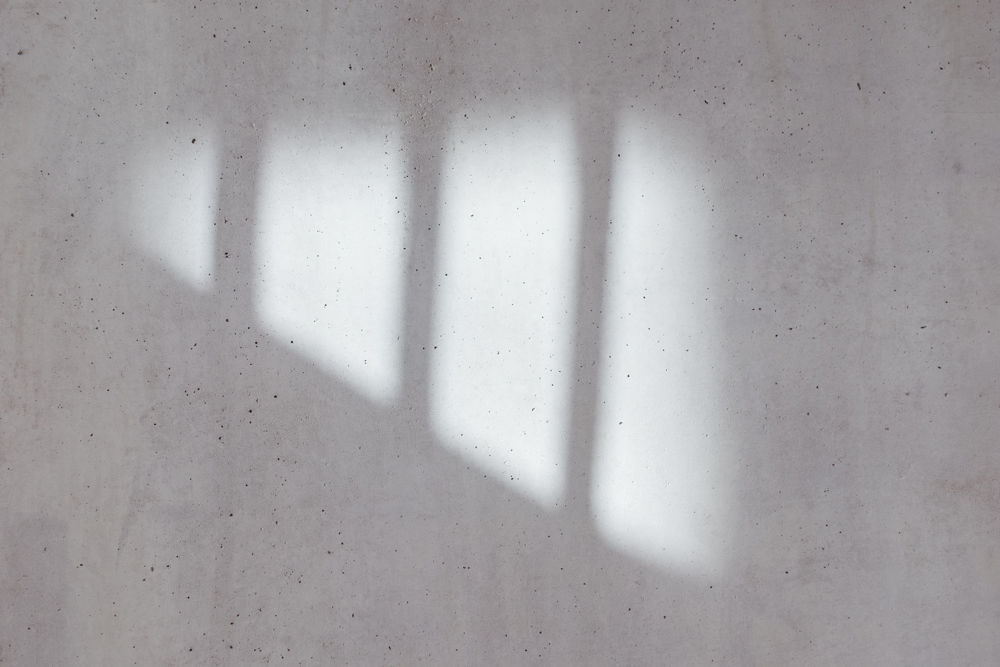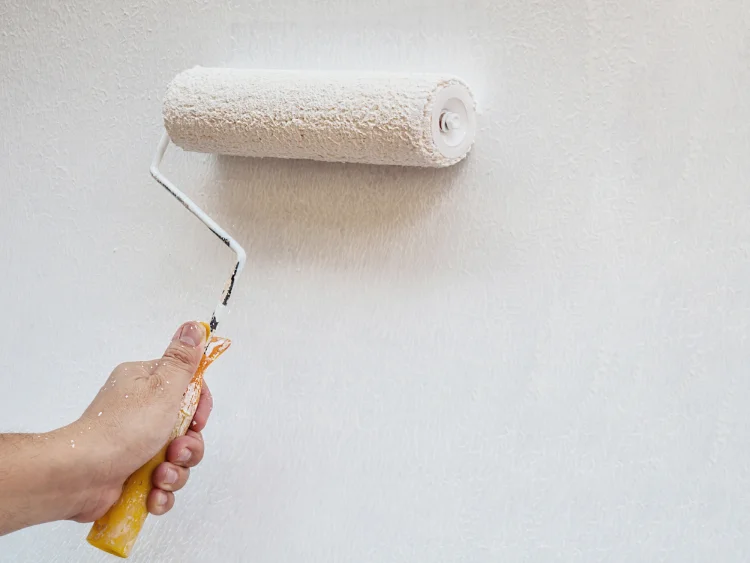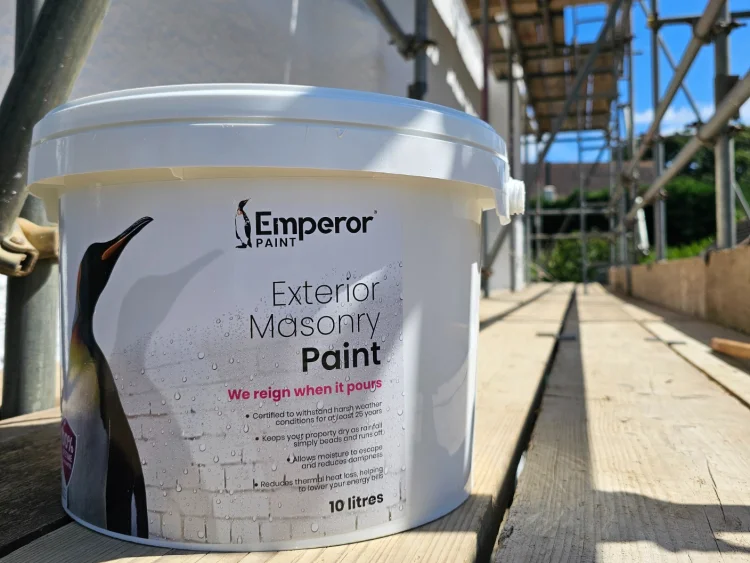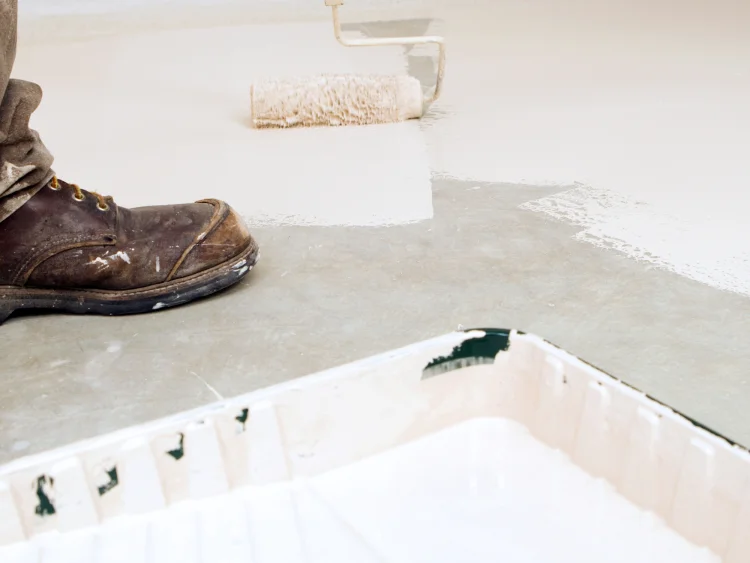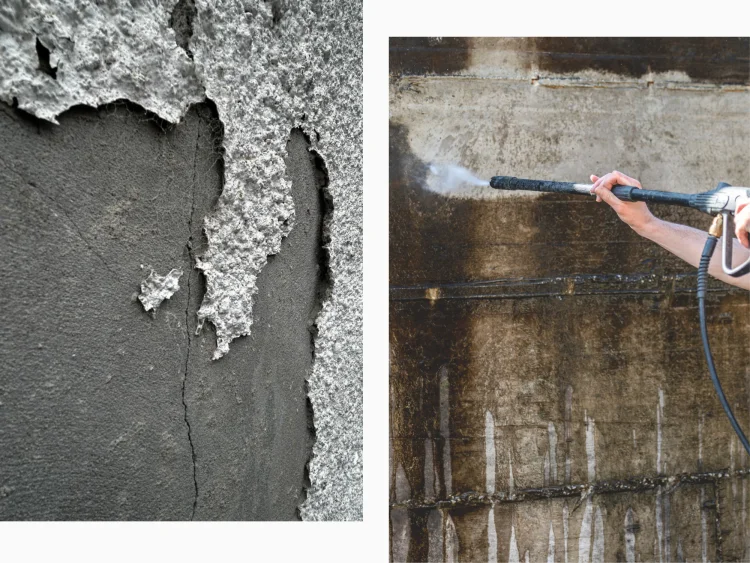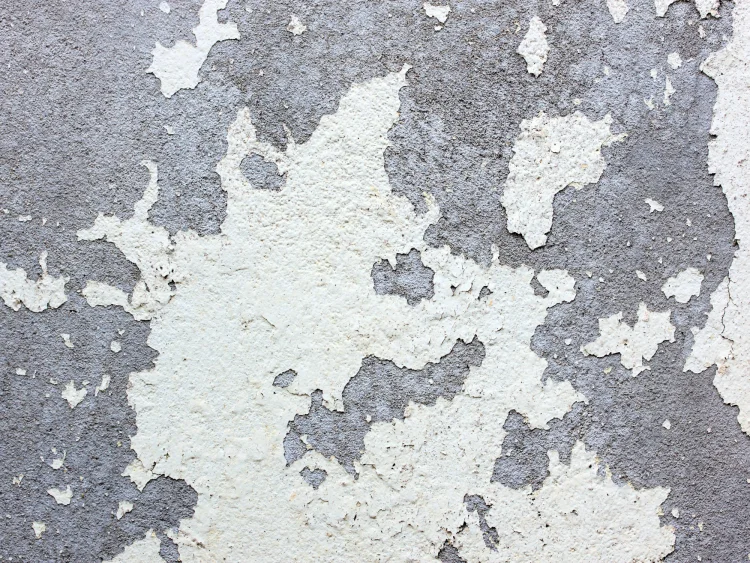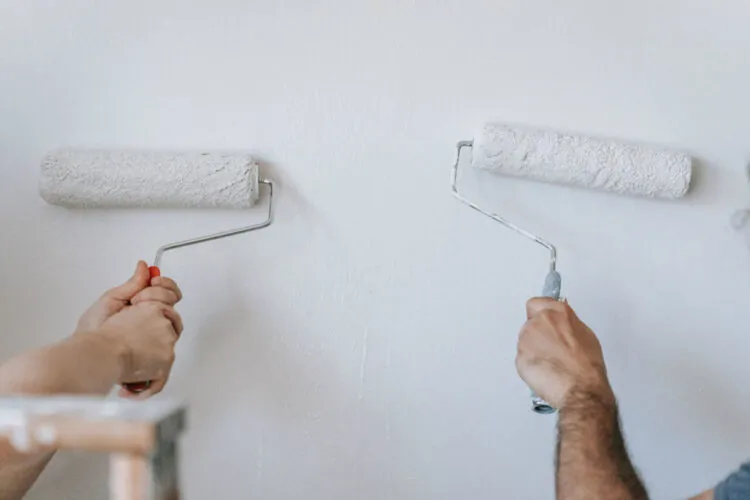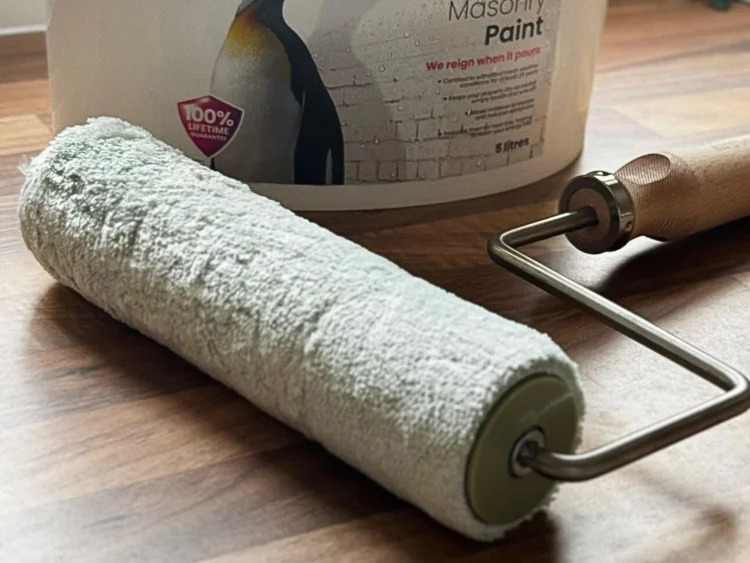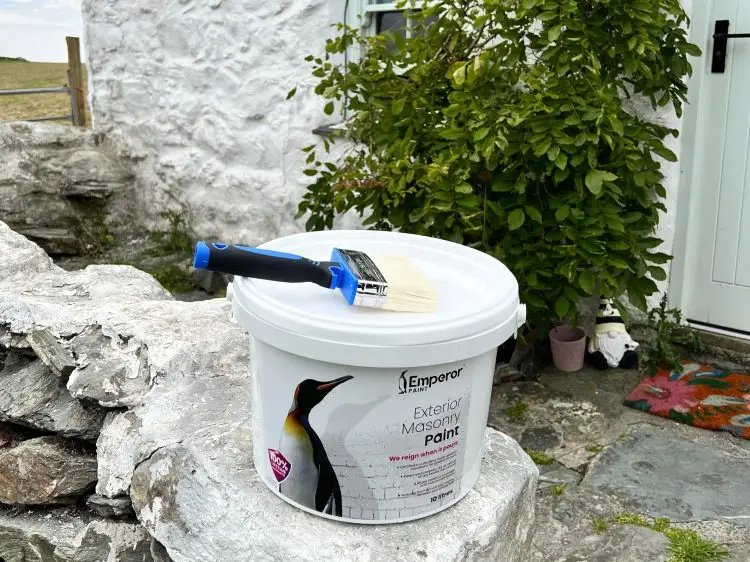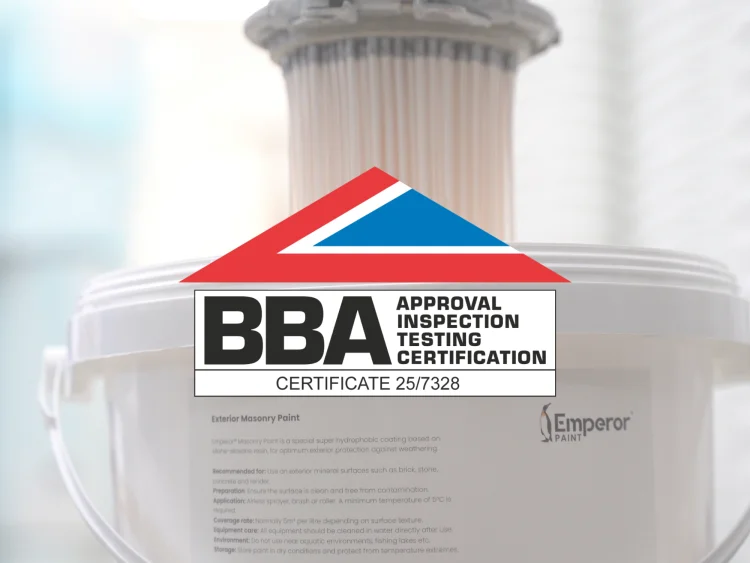Painting Exterior Concrete – The Ultimate Guide
When the weather brightens up we all want to be able to get outside and enjoy our outdoor spaces.
But before that can happen, there are usually a few jobs on the to-do list to get everything looking its best, whether it’s painting the exterior walls or refreshing the patio.
One of the most common questions we get asked here at Emperor Paint is how to paint exterior concrete. It’s a job any homeowner can take on, but there are still a few misconceptions about how to do it and what paint to use.
In this guide we explain:
- What paint to use on exterior concrete
- How to prepare concrete before painting
- How to paint concrete properly
Is Painting Exterior Concrete A Good Idea?
Yes, painting exterior concrete is a great way to not only improve its appearance but provide it with additional protection from weathering.
The key is choosing a paint that is designed for the particular concrete surface you are painting and one that is highly breathable, so it doesn’t trap moisture within the concrete.
Why Paint Exterior Concrete?
Concrete is a building material that is found all over the exterior of our houses, from exterior walls to patios.
Due to the weathering that exterior surfaces endure, you need a paint that can deal with exposure to wind, frost and rain.
While all exterior paints come with some level of weather protection, they are not all equally effective at preventing water from entering your home.
You may be asking, why is it important for a paint to be able to prevent water absorption? The answer is simple, water is the single biggest cause of paint failure. When water absorbs into the painted concrete, it gets trapped under the surface.
This is especially the case with paints that have low breathability, as the moisture has nowhere to escape. Eventually, it causes the paint to start peeling and flaking, which can happen after as quickly as within a few years.
As well as this, when exterior surfaces become saturated with moisture, it leads to discolouration and the growth of lichens on the surface. The right paint can reduce this and help keep concrete looking its best all-year round.
What Paint Is Suitable For Concrete?
When it comes to paint, it’s best to use one that is specifically designed for that surface. This ensures that the paint has the necessary properties for long-term performance when used in that way.
While in theory all paints that are suitable for use on concrete will adhere to the surface, this doesn’t mean that every paint is suitable for your project.
A concrete wall has different requirements to a concrete patio. Exterior walls are part of your home, so need to be able to support the health of the property, while concrete patios are a horizontal surface where water can pool.
PAINTING CONCRETE WALLS
When painting concrete walls, you should always use a paint designed for the needs of your home. This means using masonry paint, which is formulated to adhere to concrete, brick, stone and render
Masonry paint is different to other forms of exterior paint because it’s specifically designed for vertical exterior walls and to withstand rain, frost, sun and temperature changes while bonding to porous surfaces.
When painting exterior walls, it’s important to think beyond appearance. Not all masonry paints perform equally well.
Most masonry paints offer some level of weather protection, but not all perform the same over time. Standard masonry paints form a plastic-like film that sits on the surface. This can seal moisture inside the wall, especially if the concrete is already damp. Over time, that moisture causes paint to blister, one of the main reasons many masonry paints can begin to show signs of age within a few years. This trapping of moisture can also lead to penetrating damp and damage such as cracking.
To achieve long-term results, a masonry paint needs to prevent water entering the wall while still allowing trapped moisture to escape. That balance keeps walls dry, stable and protected.
That’s why Emperor Masonry Paint was developed, which uses nano-technology to create a super hydrophobic surface that completely repels rainwater, while remaining highly breathable. The result is a cleaner, long-lasting finish that protects concrete walls, plus it comes with a lifetime guarantee for complete peace of mind.
Learn more: How nano-technology works
PAINTING CONCRETE PATIOS
Painting concrete patios is a simple way to refresh an outdoor space, but it’s one area where many homeowners go wrong.
The most common mistake is using a masonry paint. While it may adhere to patios in the short term, it isn’t designed to cope with constant wear from foot traffic. Patios also hold standing water for long periods, which masonry paint isn’t designed to withstand. If used on concrete patios, a masonry paint will likely begin to peel within a year or two.
If you want to paint concrete floors, it’s recommended to use a dedicated floor paint.
Floor paints are formulated to withstand more contact on the surface, allowing them to withstand the natural wear and tear a patio will receive. They also have anti-slip additives in their formulation to help reduce the risk of people slipping when they walk on the surface, especially when it is wet.
While it can be tempting to use a tin of masonry paint that you have at the back of the shed to revamp your patio, investing in an exterior floor paint that will stand the test of time is your best option.
How To Paint Exterior Concrete Walls
As with any decorating project, ensuring you take the correct steps is essential for achieving beautiful, long-lasting results.
YOU WILL NEED:
- Masonry paint
- Masonry roller (long-pile roller)
- Paint tray or scuttle
- Paint brush
- 120 grit sandpaper
- Dust sheets
- Masking tape
- Exterior filler and filling knife (may be required)
- Scraper (may be required)
PREPARATION
Preparation is the most important part of the decorating process, no matter the project as any professional decorator will tell you. Try not to rush this step as it pays you back double in the long-run.
The first step is to fill any cracks or holes in the concrete wall to get a nice, smooth finish and ensure no water can enter the concrete once it is painted.
Once the filler has fully dried, sand this back using a 120-grit sandpaper to get a perfectly smooth surface ready to paint.
If you are painting concrete that has been previously painted, any areas peeling paint must be removed before you paint. Strip the paint back until you get a firm edge, where no more paint is coming off.
Once the surface is properly filled and sound, it’s time to clean it using a power washer or hose pipe. If you don’t have one, you can use a stiff brush and hot soapy water. Apply a fungicidal cleaner like Emperor Exterior Cleaner, to remove any organic growth.
Finally mask up the wall by applying masking tape along any of the edges and put down dust sheets on the floor to prevent paint splatter.
Learn more: How to prepare an exterior wall
PRIMING
A common question with painting concrete is whether you need a primer or not. A primer is applied before paint to prevent the paint from soaking into the surface and helping provide added adhesion for the paint.
If you are painting a bare concrete wall, you must prime it before you apply paint. You don’t need to apply a primer if you are painting a surface that has previously been painted.
PAINTING
When it comes to exterior painting there are a few considerations to take into account before you start, particularly the weather.
Ensure you are not painting in conditions below 5°C as any water-based masonry paint will not dry in these conditions.
Start by using a paint brush to cut in around the edges of the wall, followed by using your roller on the rest of the surface. Starting at the top and working your way down is recommended, as this will prevent paint drips.
Wondering what paint roller is best to use? A long-pile masonry roller has the longest fibres of any paint roller, which allows the roller to apply the paint to all of the nooks and crannies on the wall.
Once your first coat is completely dry, apply the second coat.
Frequently Asked Questions
Do I need a stabilising solution?
A stabilising solution is often used when a surface is chalky and hard to treat. If this is the case, you can apply a primer which acts as a stabilising solution.
Can I paint over previously painted concrete?
Yes, providing you have removed any loose paint that is already on the wall first, you can paint directly over a previously painted concrete wall.
How long does paint on concrete last?
How long a paint will last before peeling depends on the quality of the paint, the surface and how well you prepare it.
A typical standard masonry paint when applied to an exterior wall can last anywhere from 1-10 years, while Emperor Masonry Paint with its advanced formulation has been independently tested to withstand weathering for a minimum of 25 years.
When it comes to patios, these tend to wear faster due to constant foot traffic and standing water, but a good-quality floor paint will last much longer than a masonry paint.
Planning to paint your exterior concrete wall? Our in-house team of experts are always here should you need us. You can reach them by emailing [email protected] or calling 01254 936121.
Ready to start? Order your sample of Emperor Masonry Paint to kickstart your decorating project.
This article was written by the Emperor Technical Team, a group of experts with an average of over 25 years experience in the building industry. They work daily with homeowners, tradespeople and specification professionals to deliver practical, expert guidance that promotes long-term results, supports wall health and helps create homes that are prepared for the future.


